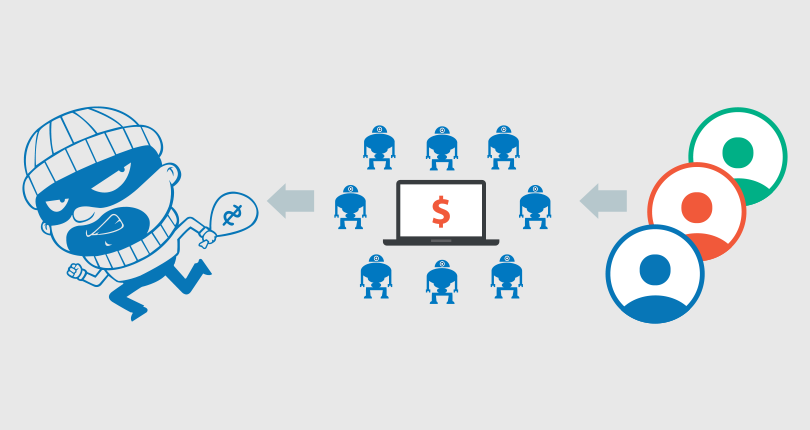It is no secret that there has been a continued growth of media outlets on the digital landscape. As digital platforms become more expansive and lucrative, there has also been a greater incentive for unethical and exploitive activities on these mediums. One of the immense issues in the digital ad space is the practice of ad fraud: the deliberate practice of attempting to serve ads that have no potential to be viewed by a human user.
There are numerous cogs in the digital ad machine, therefor leading to various avenues for fraudsters to infiltrate the process. The advertising industry as a whole is projected to lose nearly $7 billion to bots in 2016. Advertisers/Marketers are the primary party that funds the digital ad space, making them the most vulnerable in the process. Often this party can have their “cookies” data infected by bots. Because bots infect user data, advertisers often find themselves sing inaccurate data, generating fake leads/audiences. As a result, the audience often receives irrelevant ads. Publishers are responsible for hosting content as well as advertisements online. Lastly, third party brokers can help publishers garner views and find the most attractive audience.
There are various methods and practices to implement ad fraud such as:
Click Fraud- Bots are used to impersonate human viewership
Pixel Stuffing- A form of ad hiding where ads are crammed into a 1×1 pixel space making ads undecipherable to a viewer but still charging for impressions.
Ad Stacking – A form of ad hiding where website owners places several ads on top of one another in a single ad space.

Whenever new technology develops there will be unforeseen “growing pains” that follow. There are various factors as to why the ad industry is having trouble combating fraud. The demand for having access to a precise target market often exceeds the supply of paths to reach those consumers. Because of the discrepancy between supply and demand, fraudsters have tried to artificially fill that void by creating fake audiences to “help” advertisers reach their desired impressions and appear to have a higher ROI . Programmatic buys have a higher occurrence of fraud compared to direct buys because of the possibility of inaccurate data. Additionally, many publishers did not tailor their digital platforms to combat fraud, leaving them more susceptible to fraudulent behavior.
Ad Fraud may never be eliminated completely however, there are certain measure we can take to combat this growing issue and ensure legitimate audiences. One way to initially resolve this is by develop better relationships among advertisers, publishers and ad networks to establish transparency. As with other traditional forms of media, advertisers need to set a standard for what they consider to be impressions. By setting a precedent for the industry there are less opportunities for fraudulent behavior.
